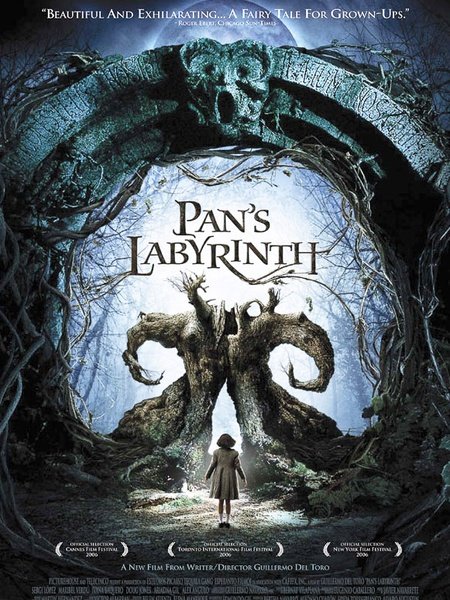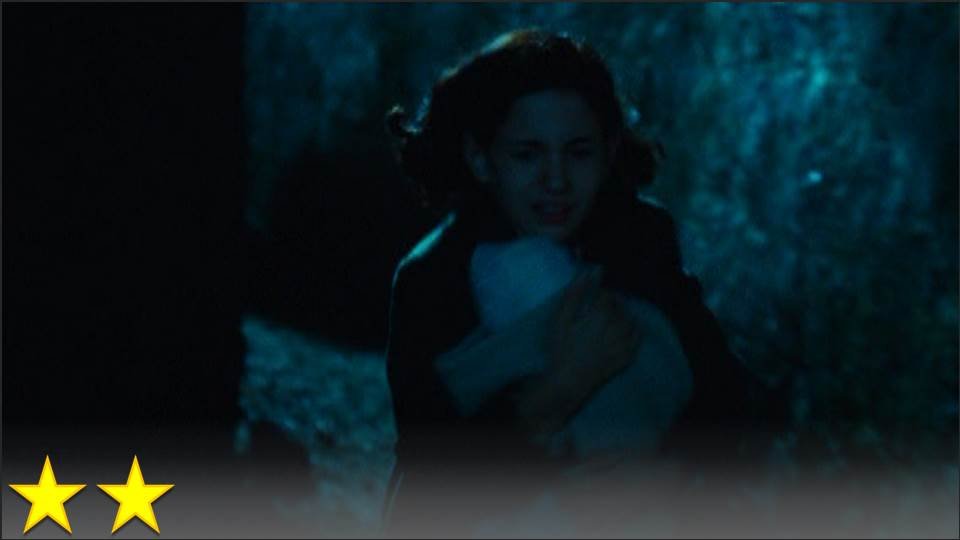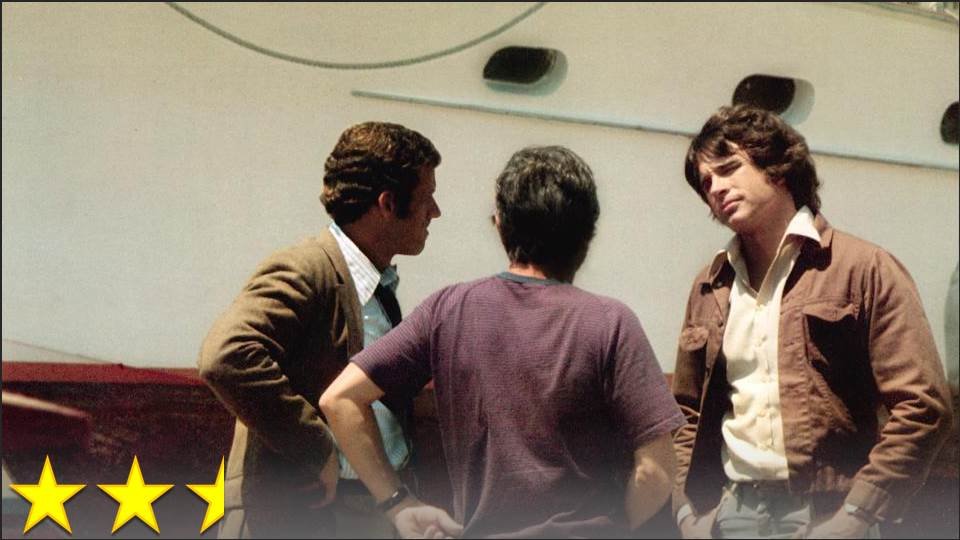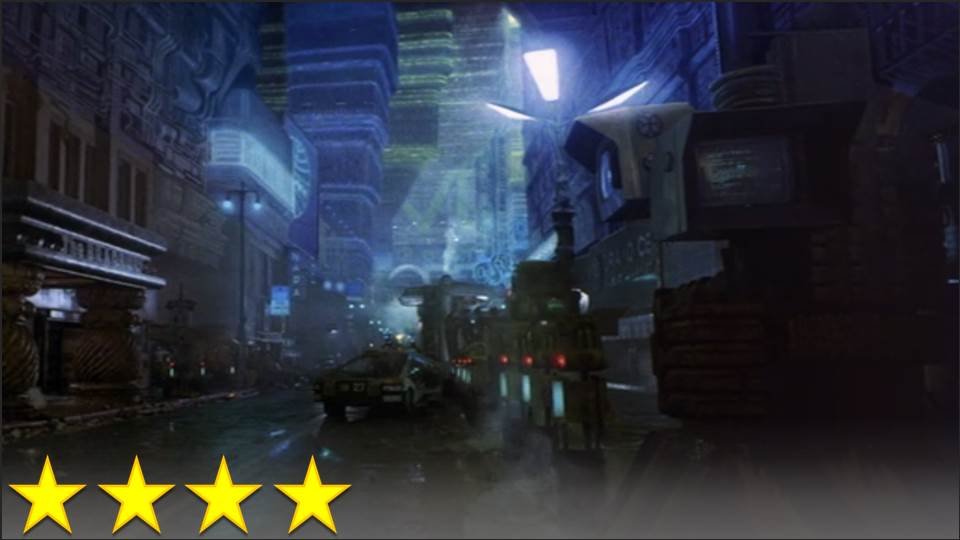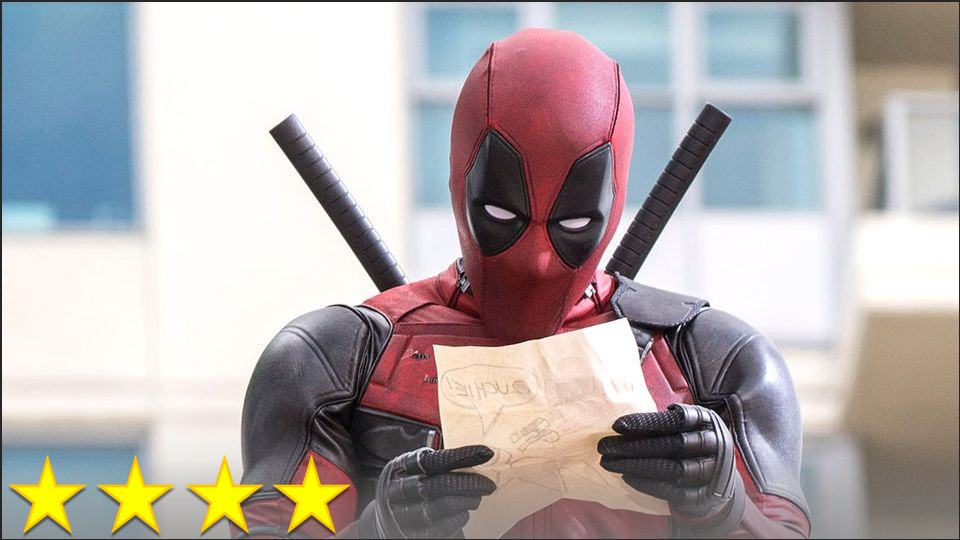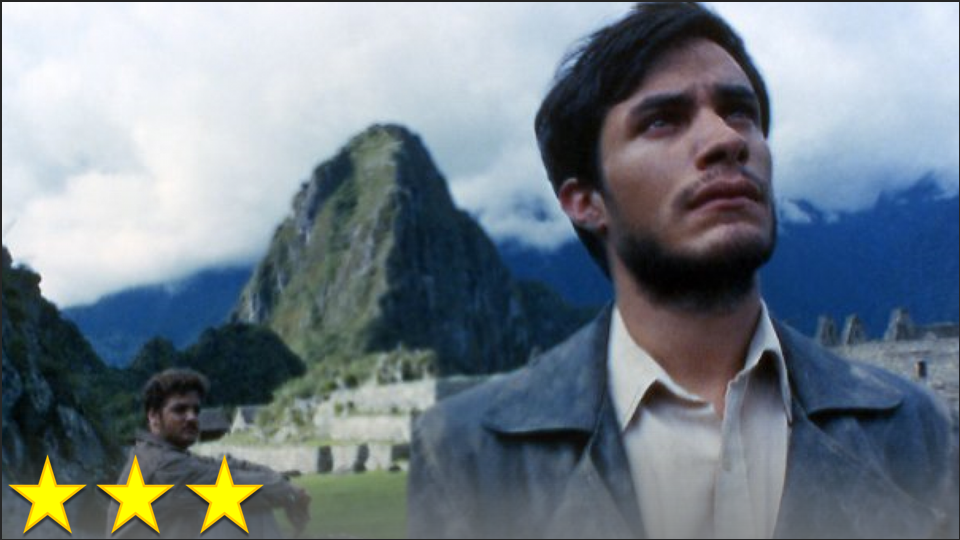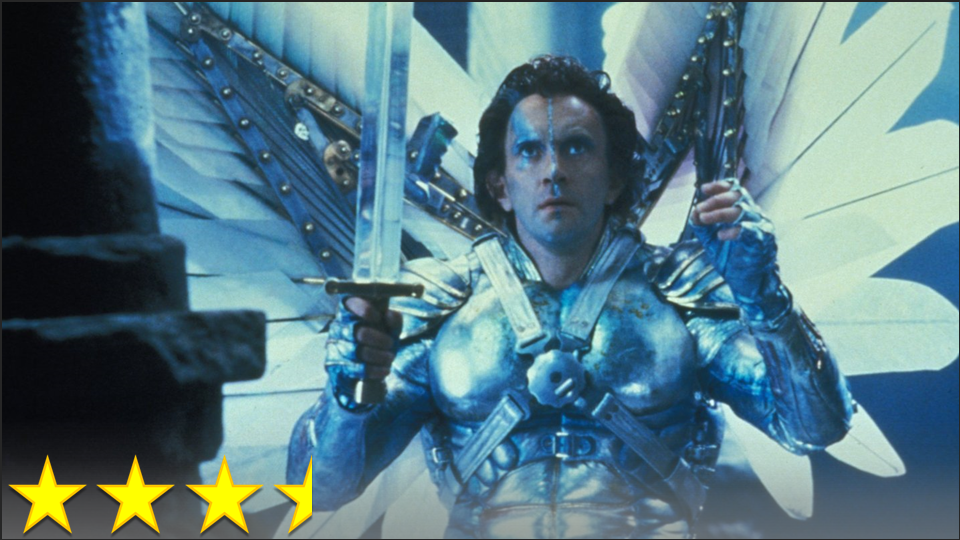WARNING: THIS REVIEW CONTAINS (mildly) GRAPHIC IMAGES
Oh, and also, spoilers.
As of the moment I’m typing this, I’m not sure I’ll be able to publish this review. I have had so many complex thoughts and feelings about this film since I watched it in early May that I don’t know how to boil my thoughts down to something readable. If I had to pick a place to start though, I’d start with a Google search. Could you do me a favor right now? Do a Google image search for Pan’s Labyrinth before continuing to read this review. Got it? Now take a look at this poster:
This is a fairly standard poster for the film. Most of the posters looked something like this, emphasizing the fantasy elements. The Google image search just showed several pictures of the fantasy creatures in the movie, but almost none of the real-world story that takes up at least half of the movie. What story is that? The one about the brutal fascist in post-war Spain who beats a man to death by smashing a bottle into his face, then deliberately cuts his own neck, then gets his face sliced open, then gets heavily drugged, and finally shoots his stepdaughter. With this in mind, let me propose my own poster for the film, and this will serve as a makeshift abstract to my explication of the movie’s true focus: the devil in the details.
This movie is a wee bit obsessed with graphic violence – or at least what I, a little squeamish wimp, would consider graphic violence. It’s harder for me to watch than Twelve Years a Slave – I’d put some scenes in Passion of the Christ territory. The violence is done not in a fun way that emphasizes the fantasy elements, as is the case with a Marvel movie, but in a way that adds painful realism to the film. The movie is designed to be anchored in an uncomfortable reality – and by gosh does it try to be uncomfortably realistic – to prompt a desire to explore fantasy. Here’s my first problem with this: we don’t need to be shown reality to remember that we want to escape it. Each and every person who has seen Pan’s Labyrinth already exists in reality, and most of us only pay for movies so we can escape into a fantasy for a little while, which makes the side of the story in fascist Spain rather redundant.
Here’s another issue I have with this approach: it’s deceptive. Again, consider the first poster. This suggests that we’re getting something in the vein of Jim Henson’s Labyrinth, or Time Bandits, or The NeverEnding Story, or Willow, or maybe just a slightly darker Wizard of Oz. At first, the movie makes it seem plausible that this is where we’re headed. Then, as the scenes in the real world grow in number and length, it becomes clear that the weed of realism all but consumes what tiny garden of fantasy the filmmaker has presented. This makes Guillermo del Toro, the writer/director/producer/god of this picture, a fascinating artist in my opinion – he’s extremely knowledgeable of old mythology and fairy tales, and he obsesses over Phantom of the Paradise even more than I do – yet he was very conservative with creative, dramatic, and whimsical fantasy when writing this film.
When the fantasy is present, however, it’s often rather weak in my opinion. Now, admittedly, I am spoiled when it comes to fantasy because I’m accustomed to tentacled sea witches, hands that form talking faces, a giant animatronic plant, and medicine that changes color when poured into different spoons (and I still haven’t figured out how on earth they were able to pull off that last one). Still, the fact that I’m used to seeing fantasy set to a high bar is no reason for me to accept fantasy that’s set to a lower bar. Sometimes this movie does do a good job with some of its fantasy elements – using very nice costumes for all of its many (and by many I mean two) humanoid fantasy creatures – but for the most part, we get hideous CG. The scene with the stones that inexplicably make a giant frog vomit itself out of its body is certainly unlike anything that’s been done in film before, but I think the reason why no previous movies had ever done such a thing is that it makes absolutely no friggin’ (or froggin’?) sense.
The worst thing about this fairy tale is that I think it almost works. The faun is, as I learned from reading interviews with del Toro for a research paper I wrote on this movie, traditionally the trickster in ancient mythology. The fact that it is the faun offering an escape for the protagonist – a little girl named Ophelia – puts him in a position to be the devil of a “Faust” story, because he can offer her everything she’s dreamed of if only she’ll comply with his (seemingly mostly harmless) demands. Now, everyone loves a good “Faustian” movie – it’s clear that I do because of my infatuation with Frank Oz’s Little Shop of Horrors, and it’s clear that del Toro does too because he wanted to name his daughter after Phoenix from Phantom of the Paradise. What del Toro does instead is make the faun seem untrustworthy, and then reveal he’s really not trustworthy, only to ultimately reveal that he’s been totally doing the right thing all along … or at least that’s what the movie tries to suggest. When the movie ends with Ophelia arriving in the strangely heavenly Underworld, the faun is just chillin’ there, and it turns out his unethical commandment to take blood from a baby was just testing her to make sure she would disobey when it came down to morality. While it’s true that this test is far more ethical than God’s test of Abraham with the order to kill Isaac, this still puts the faun right up at the line of what my conscience can stand, so it seems out of place for him to be seen as an angelic figure in the Underworld. I intend to explain later how del Toro’s view of the faun’s role in the story actually makes him even more devilish than this, but for now, the key takeaway here is that the faun is just serpentine enough to be the antagonist of a “Faust” story, leading Ophelia further and further down a path of bad decisions until she can’t escape (hence the “labyrinth” theme). This “Faustian” story seems incomplete without a Serling ending: she arrives in the Underworld to find that it’s actually Hell.
Having explained my issues with the fantasy, it seems to me that the next step in my cathartic diatribe is to address the supposed themes of empowerment and liberation. Because I already wrote a research paper on this subject for my university, I would be bored if I had to write the same material again, so I will instead summarize my views on this as briefly as possible, leaving the paper I wrote online for any curious readers to view if they so choose. In short, it seems as though this is a story that may be empowering for women, and the creation of the film may be inspiring to filmmakers who aspire to obtain just as much creative control over their films as del Toro had over this one. Both of these perspectives strike me as misguided, because the way I see it, the movie fails to effectively deliver its message about the freedom in disobedience, fails to follow through with its message of the power of women, fails to free the director as an artist, and fails to offer a liberating conclusion.
Let’s start with the first point. Guillermo del Toro has stated that the movie is largely focused on the “virtue” of disobedience. As he stated in one interview, “Disobedience is one of the strongest signals of your conscience of what is right and what is wrong. . . . Instinct and disobedience will always point you in a direction that should be natural, should be organic to the world. So I think that disobedience is a virtue and blind obedience is a sin.” Throughout the film, he uses the theme of choice (echoing the fairy tales and mythology he knows so well) to reveal who the characters truly are, and the paramount choice in the movie is Ophelia’s act of disobedience against the faun. While I could easily argue that the idea of getting a drop of blood from a baby isn’t exactly the most morally deplorable concept conceived in cinema, the issue here that concerns me the most is that her disobedience against the faun earlier in the film, even though she had no choice but to be disobedient, is deplorable. Her disobedience regarding a freaking grape caused fairies to die. A baby can recover from a tiny prick on the finger, but those poor, innocent fairies can’t recover from death (until they inexplicably . . . well, do recover from death, because with how inconsistent the logic of this movie has been so far, I guess anything goes).
Then there’s the matter of the women’s empowerment themes. Think about this for a minute. Both Ophelia and that other lady I kept confusing for Ophelia’s mom (What’s her name? Mustang? Chevy? Corvette?) had every reason to kill the captain, and we know they would have been fully justified in doing so. They also displayed the ability to kill the captain, but oddly enough, neither of their clever, creative tactics to fight against the captain actually succeed at killing the guy. I’m guessing that Ophelia’s intent was only to disorient him with the drugs, not kill him, but I find it hard to believe that the knife Honda Accord stabbed right through the captain’s chest was just meant to be a paper-cut. Miraculously, because the one thing del Toro did take from Phantom when he wrote this story is Swan’s ability to survive a stab through the heart, the captain just keeps going. In spite of his wounds and his drugs, he succeeds in killing Ophelia, and then keeps going until Volkswagen’s brother shows up to save the day by simply shooting him. Sure the girls had far more clever ways of fighting him, and sure they had more of a direct relationship with him that would make it more climactic for them to be the ones who defeated him, but apparently it takes a man with a gun to do the job. Tune in next time when Humphrey Boghart can’t kill Major Heinrich Strasser, but Sam the piano-player knocks him dead with a good punch in the face.
My third point about the director’s freedom may not seem related to the content of the film so much as the story behind its production, but I believe it’s actually relevant to the meaning of the film as a whole. Remember what I said before about del Toro’s use of the theme of choice to explore the characters? Here’s how he elaborates on that: “Extremes are incredibly powerful in cinema and the fact that this 11-year-old girl is much more comfortable in her skin than this fascist that hates himself so much that he slits his own throat in the mirror and negates his father’s watch and does these crazy things, that gives the girl power and gives the other guy the illusion of power and the choice of cruelty. Choice is key in what we are.” What choice is he referring to in regards to the captain? His obsession with little details. Captain Violent Vile Vidal is seen in the film using a magnifying glass multiple times to reflect the fact that he’s “So obsessed by the little things – how shiny his boots are, how well his watch runs . . . that he loses perspective of the larger stuff.”
I took the above quote from his audio commentary on the DVD, and I cannot help but find his commentary track hilariously ironic. Throughout his commentary, he himself focuses on the tiny details in every single scene. He had images of the faun subtly carved into parts of the house, and he had a particular color palette for each of the film’s locations, and he made sure there was moss in the labyrinth that would show off the blue and green filters he used for those scenes, and he put gears behind the captain’s desk to visually “rhyme” the gears in his watch, and he came up with a special design for the legs of the faun costume that would allow the performer inside to “puppeteer” the legs in a style based on bunraku puppetry. I know all this from just the first 25 minutes of his two-hour recording. I find it amazing that he had to fight hard to keep total creative control over this project, only for it to nearly destroy him, taking “45 pounds off my body” due to his fixation on detail, which was his slavery more than it was his freedom. Clearly, this filmmaker’s primary condemnation of his evil protagonist, consumption by an obsession with tiny details, is just as much a problem for him as it is for the character he so despises. Ironic, isn’t it?
Let’s bring my tirade back to the contents of the movie. The fourth point that I must address, as outlined five paragraphs ago, is my issue with the conclusion. It may feel like I already dealt with the conclusion when I brought up Casablanca, but there is much more to it than the matter of who gets to kill the villain. Since the first minute of the movie, I was promised that there’s a very real magical world at the end of this story, and Ophelia is going to get there. Because this movie is intended to be everything I hate in cinema, the reality of the fantasy is left open to interpretation for most of the film. Towards the end, however, del Toro practically negates this mysterious theme by showing a wall of the labyrinth opening up for Ophelia magically, before closing up for the captain, which makes it hard for the viewer to think of a way that the magic could all be in her head. This makes it appear that the ending is not open to interpretation – that the story definitely does end with Ophelia reaching the Underworld. The problem with this is that it’s just not believable; it’s almost as though del Toro was trying to make sure the audience wouldn’t buy it.
Throughout cinema, I’ve found that suspension of disbelief can go very, very far into fantasy, but its bounds are found in human reactions. When a certain silly super hero suddenly becomes gigantic in Cival War, it’s a little hard to swallow since the previous Captain America movies tended to be too serious for that kind of thing, but with Stark referring to it as a “fantastic abilit[y],” I buy it. In Pan’s Labyrinth, Ophelia should still be sad about losing her brother, and should feel at least a little sense of loss since she’ll never see anything or anyone she cared about in her home-world again. Similarly, the king and queen should be leaping out of their thrones to embrace their beloved child. Instead, we get a picture that’s unlike the way this scene would play out if the motivations of the characters were consistent with their personalities, interests, and experiences, and more like the way people behave in a dream – with inexplicable behavior that does not naturally follow from character and motivation. This suggests that the ending is merely a dying vision, which means our beloved protagonist is dead. To make it clear that this is not my subjective reading of the film based on my experience, the evidence backing up this interpretation is found in the presence of the fairies in the Underworld, even though those are the exact same fairies (and del Toro has stated that they definitely are the very same fairies) who were decapitated by the Pale Man.
Guillermo del Toro has attempted to get around this problem, but the way he does this creates further problems. He says that the presence of those same fairies is evidence supporting his reading of the film, which is that the Pale Man was just the faun in disguise. First of all, shut up. I’ve seen video of Penn and Teller showing how the old trick of sawing a woman in half is usually done, and then they somehow proceed to saw her in half in a different way that I can’t figure out for the life of me, but I doubt even they could succeed at biting off someone’s head, leaving him/her undoubtedly decapitated, and then reveal that the guy was fine the whole time. Still, even if we assume that the faun did posses the near omnipotence required to pull off such a feat, this means that he terrified this little girl with the most gruesome of party tricks for no good reason. As I may have mentioned earlier, her character isn’t even being tested here, because she’s under the influence of fruity voodoo, and it’s an even stupider test if the faun is involved in each and every part of it. This is unethical manipulation, meaning that the faun is in no position to test Ophelia’s morality since he is lacking in morality himself, thus hurting the logic of the film even more.
So there’s a simplified list of my biggest issues with Pan’s Labyrinth. I really wanted to love this movie, but it wasn’t what it appeared to be. I find it amusing that the film is not only hypocritical in its condemnation of Captain Vidal’s perfectionism, but also because it’s just as much of a deceptive, manipulative trickster as the faun. I’ll do anything short of nailing 95 of its flaws to a church’s door to persuade others to share my contempt for this film. This is the movie that made me so incredibly angry after seeing its ending that I walked to the nearest shop to buy an umbrella to beat a cardboard box with so I could get my rage out before trying to sleep that night, and I can think of no other cinematic experience that has made me respond so violently. I hated this movie. Hated hated hated hated hated this movie. So it sucks that it’s actually very impressive.
It’s amazing that del Toro was able to pull off this movie without Hollywood, and it’s honestly one of the most impressive films I’ve seen in a long time. This filmmaker pulled from a bazillion myths and fairy tales to create his own original, memorable, and modern fairy tale that stands out against all other fairy tale movies that came out at its time. As a filmmaker, his attention to the grammar of film on a visual level is unbelievable, creating a “ballet” as he called it between the camera and the actors, and using straight lines and vertical wipes for the captain’s world to contrast with the curvatures and horizontal wipes of Ophelia’s world. Since I generally value storytelling with sound as much as I value storytelling with visuals, I must also mention that the soundtrack has an absolutely excellent theme song, which establishes a “hauntingly beautiful” kind of tone for the fantasy elements. He manages to use the trickiest of emotions for a film to present – heart – with no sense of sappiness, creating a beautiful scene between Ophelia and her then-unborn brother. The simple irony of Mercedes (hey, THAT’S her name!) wiping off the knife after stabbing Captain Vidal the same we she did when she used the knife to serve him is one of the most satisfying moments to date in the cinema of the 21st century.
So, as much as I want to give this movie the lowest rating possible, what I have written above has shown that I cannot, but not just because it has its good moments. I really do consider this to be the most hypocritical film I’ve ever seen, but just as the faun is in no position to judge Ophelia’s morality, I’m in no position to judge this movie’s hypocrisy, because I am just as hypocritical. The fact is, I’ve been writing the most detailed review of my life, very carefully noting each and every one of the film’s flawed details, and I’ve been referring to interviews and the audio commentary to ensure that I make my point as clearly as possible. It’s been at least a month since I finished watching Pan’s Labyrinth, and since then I’ve been thinking about it and thinking about it aggressively trying to formulate my thoughts as well as possible, without missing any opportunity to criticize it. My research paper on Pan’s for my college went well over the page requirement even though I wrote the vast majority of the paper in just two days, and this review is even longer than that research paper was. I had to request that my county’s library system send a copy of the DVD to my local library so I could continue through the audio commentary where I left off, and I intend to finish the commentary track after I’m done with this review, because after all this time I’m still not done obsessing over this abominable movie. I haven’t been working on any other reviews since I did The Parallax View back in May, because this film has had me mentally enslaved.
Clearly, my primary condemnation of this filmmaker’s primary condemnation of his evil protagonist, consumption by an obsession with tiny details, is just as much a problem for me as it is for him as it is for the character he so despises. Ironic, isn’t it?
